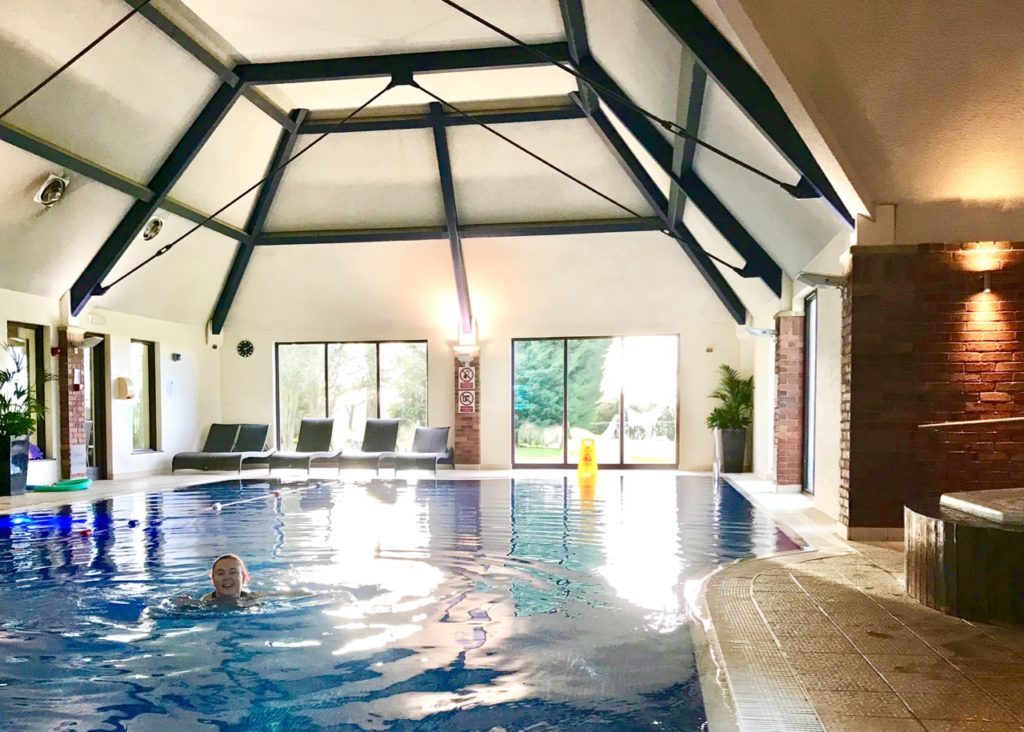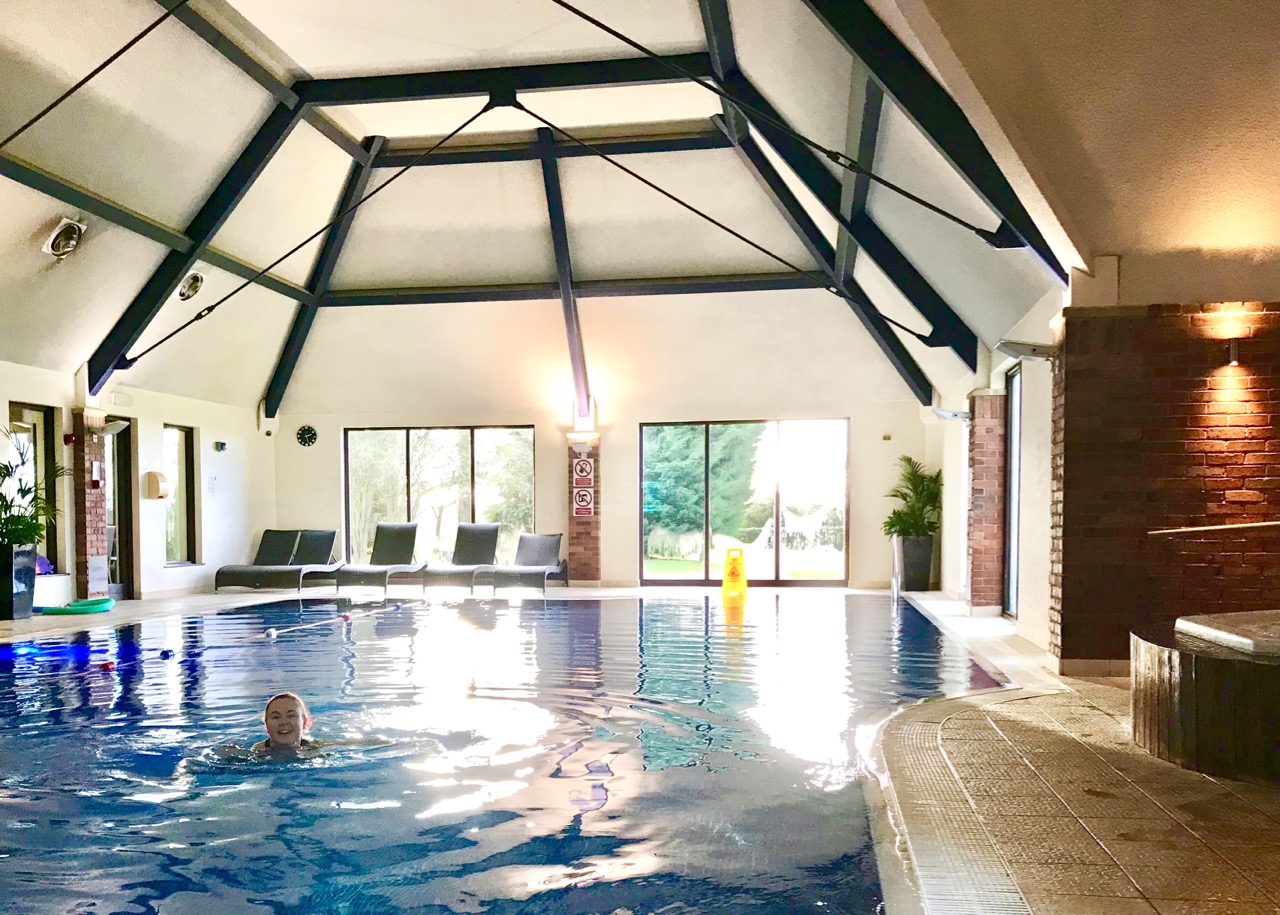POST BABY FITNESS | 10 Tips For Starting Swimming [AD]

AD / THIS POST IS COMMISSIONED BY SIMPLY SWIM. ALL WORDING & OPINION EXPRESSED IS MY OWN, NOT OF THE BRAND.
Getting fit after having a baby is a promise most of us new mums make. I was no different. After a tough pregnancy managing SPD, I vowed to lose the baby weight and get myself fit. However, fast forward two years and I’m yet to make my fitness goal my real life regime.
As I have the chronic pain conditions, fibromyalgia and joint hypermobility syndrome (JHS), exercise isn’t a simple matter of signing up to the gym and going. The reality is, my body doesn’t appreciate working out but because a healthy lifestyle requires it, I spend my life trying out exercise methods that’ll benefit me without exacerbating my pain conditions. So with all these ailments on top of my baby weight, getting fit can be a minefield.
I’ve arrived at the conclusion that swimming – or water therapy – is the only likely exercise that will help. In fact my physiotherapist instructed me to get swimming already, not just because she knows the weight-bearing properties of water will help strengthen and work out my joints, but because she knows it will help my mental health too – the anxiety I still struggle with on a daily account. So I have at least two reasons to get down the pool already and my hairy leg excuse is wearing thin.
To get my head around the fact I need to start a swim regime, I made a plan of action: easy steps how to get started so I don’t get too overwhelmed and back out.
Here are my 10 tips – little things to consider and suggestions to help you start swimming after having a baby:

1 – WEAR SUPPORTIVE SWIMWEAR
Choosing the right swimwear is the biggest hurdle to jump because what you wear may depend on what you’re looking to do. You want to consider if you’re going for a casual swim, whether you’ll be taking part in vigorous classes and if you’ll be breastfeeding while you’re there. If you’ve had a baby or not worked out for a long time, you may be feeling self conscious of your lumps and bumps, even though they’re completely normal and should absolutely not be hidden away, you may feel more confident wearing tummy control swimsuits or swimwear that covers your bottom more or fits higher up over your chest. Simply Swim has a huge variety of swimwear catering for whichever style you’ll feel most comfortable wearing. Their Speedo Sculpture range is worth checking out.
2 – START SLOW
It’s easy to overdo exercise after a long period of inactivity, so be sure to ease back into it by taking it slowly. A 15-20 minute swim may be more than enough time to begin with because your muscles can only cope with so much. If you already have chronic pain or have had pelvic issues since childbirth, you may find even ten minutes in the pool is plenty – remember to listen to your body, and if you feel pain then you shouldn’t push through it.
3 – TRY A CLASS
If swimming lengths isn’t your thing, water therapy sessions such as aqua fit or aqua zumba is a brilliant alternative. Not only are these groups a super fun way to enjoy the swimming pool, you’ll find they’re inclusive, supportive and still offer a good, safe workout. Dance music and floats are often used and you don’t need to be a competent swimmer to join in.
4 – GO WITH THE FAMILY
One of my biggest excuses why I won’t go swimming is parenting – I always feel like I don’t have time to go and I feel guilty at the thought of it. So rather than not go at all I figured something is better than nothing, and that surely making swimming a family activity will encourage me to swim even in fits and bursts while playing with the little one. And if we go with Dad, we could take turns so I can catch some moments to swim a brief time child-free. Bonus!
5 – JUST MOVE
As someone who is, by no exaggeration, a pretty poor swimmer, I do get anxiety about people watching me swim, or rather trying to. So to warm myself up until I’m confident to swim a length (or part of) I like to spend some time just focussing on movements. I’ll hang out at the pool edge and kick my legs and twist and roll in the water, not swimming exactly, just moving; literally the kind of exercise you’d do in an aqua fit class so even if I can’t manage any ‘proper’ swimming, I know even by simply moving myself it’ll still benefit my joints.
6 – FLOAT
The thought of swimming when you haven’t swam in years or you’re the least fit you’ve ever been, can seem like the worst idea. But experiencing the benefits of water exercise is hugely rewarding no matter your fitness level. Swim aids such as pool noodles and floats lend you enough buoyancy for the confidence to step into the water and go for it. You can try teaching yourself to swim, fine tune your technique or just use the floats to make exercises and movements that little bit easier. And floats are fun, so if you’re allowed them in your pool session, go for it.
7 – GO IT ALONE
Swimming is hugely therapeutic for the mind as much as the body, which was why both my physio and CBT therapist kept urging me to go swimming already. In this instance it’s a great idea to take yourself solo swimming. With no family distraction, you can focus on your own needs. Clear your mind, release the tension with each length and absorb the moment. You can feel guilty for taking time for yourself but when it’s for your health it’s not really a matter of self indulgence. Go and it’ll be good for you.
8 – CHECK THE TIMETABLE
Swimming pools don’t tend to stay open all hours for everyone, there are specific slots in the timetable for different societal groups so there’s a good fit for everyone. If the thought of swimming in a pool with children is too stress inducing, avoid the family swim sessions. Likewise, if the ladies swim session sounds more comfortable, and a disabled session more supportive, then you want to keep an eye out for them in the timetable. Knowing the sessions you want to aim for can be more encouraging to get yourself along.
9 – CHOOSE YOUR POOL
Most leisure centres boast more than one pool to cater for the varied styles of swim sessions. The main pool is typically where competitive swimming takes place and lane swimming is offered, as well as the location for any family fun inflatables. While a smaller pool is usually used for babies and private training sessions. Depending on what you’re wanting to do at the pool, hardcore swimming or a class, there’s benefits to both kinds of pool. I find I prefer a smaller pool that isn’t the standard 25m length, and one that’s a consistent depth where my feet can comfortably touch the bottom without drowning (I still cannot fathom treading water.) And possibly the greatest draw to a smaller pool is that they tend to be heated to a warmer temperature than the main pool.
10 – BUDDY UP
The thought of going swimming alone can be hugely daunting, so what could be more encouraging than buddying up with a fellow swimmer-to-be. Well, it’s surely doubly encouraging if you make swimming a date because you’re more likely to actually go and keep up with the swimming regime. So you can put it in the diary, look forward to it like any other social get together and know that you’re ticking that goal of getting yourself swimming off the list.
Have you been thinking about going swimming? What’s been putting you off? Or maybe you already go swimming – what’s your best tip to start?


Leave a Reply